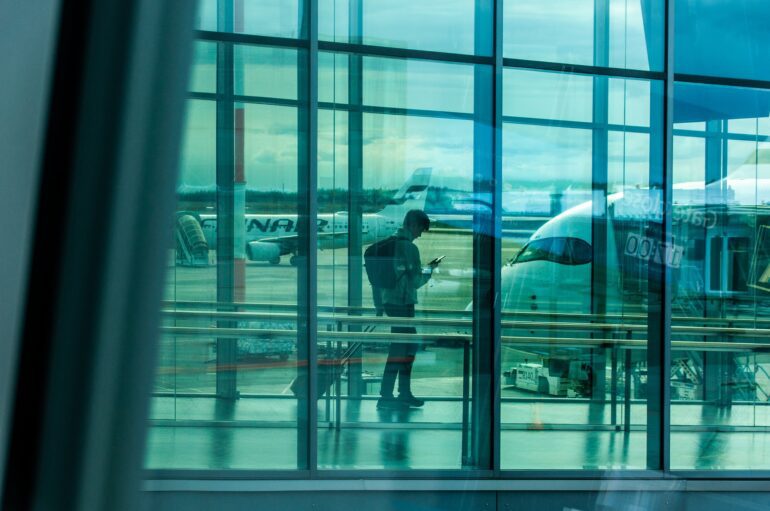TL;DR:
- Airports are on the cusp of a revolution, set to offer seamless, contactless, and personalized experiences.
- The passenger experience will be enhanced through virtual queues, customized information boards, and biometric journeys.
- Touchless technology, including facial recognition and automation, will streamline check-in and security processes.
- By 2040, touchless digital ID cards may replace paper passports, ensuring smooth travel and immigration clearances.
- Secure data-sharing across the travel industry remains a challenge, but passengers may have the option to opt into these services.
- Airports will become more than just transportation hubs, resembling vibrant airport cities with a range of amenities.
- The market outlook suggests significant opportunities for innovation, with technology and sustainability driving the future of airports.
Main AI News:
Airports are poised for a transformative shift towards greater efficiency and seamlessness, according to a recent report. Despite the increasing demands and larger capacities required to meet growing travel needs, airports are expected to undergo significant improvements. This progress is essential, considering that airports play a crucial role in our economy as the starting and ending points of many journeys. However, they also tend to be the source of numerous travel frustrations, such as flight delays, security bottlenecks, and subpar customer service.
Surprisingly, airports have the potential to become enjoyable destinations even for those who aren’t traveling. A passenger experience “revolution” is on the horizon, as revealed by a study conducted by the Oliver Wyman Forum, the research division of the global consulting company of the same name. Rana Nawas, the lead author of the study, states, “Our travel experience is about to get seamless, contactless, pleasant, fast, and personalized.” Additionally, Nawas adds that efforts are underway to make travel less polluting, with airlines gradually transitioning to sustainable aviation fuels and airports adopting electric ground equipment.
The Oliver Wyman researchers have identified key trends that will shape the future of airports, encompassing sustainability objectives and transformative technologies, to project developments up until 2030, 2040, and 2050.
Profound changes are anticipated even within the current decade, with airports offering more tailored passenger services. Imagine virtual queues and food delivery right to your gate, along with additional spaces for relaxation and shopping. Seattle-Tacoma International Airport and Los Angeles International Airport are among the pioneering airports in North America testing virtual queues. This innovative approach allows travelers to bypass the security line by reserving a digital spot for TSA screening. Moreover, Detroit Metropolitan Airport has introduced a futuristic departure board that employs facial recognition technology to provide travelers with personalized flight information. In Latin America, Uruguay’s Carrasco International Airport has become the first fully digital airport, boasting biometric journeys from curbside to the gate.
The future holds the integration of “touchless” technology into many airports, leveraging facial recognition, artificial intelligence, automation, and biometric scanners to streamline check-in, security, and immigration processes. By 2040, touchless digital ID cards could potentially replace paper passports, confirming passengers’ identities, travel details, and immigration status. When combined with biometric technology, passengers could move through security and immigration “tunnels” at a leisurely pace, experiencing a seamlessly uninterrupted journey, as predicted by Oliver Wyman. If the security process becomes integrated with other modes of transportation, such as air taxis or high-speed trains, a passenger’s information could be verified even before arriving at the airport. Furthermore, with personalized baggage pickup and drop-off services, travelers’ luggage could be sent ahead to the airport, freeing them from the burden upon arrival.
However, achieving such a seamless experience would require secure data-sharing across the global travel industry, which poses a significant challenge. Nawas emphasizes the importance of safety when it comes to digital identity sharing, stating, “If my digital identity is shared, I need to know it is safe. Governments across the world need to accept each other’s security clearances.” It is likely that passengers will have the option to opt into these services, as not everyone may feel comfortable sharing their digital identity despite the allure of a seamless and contactless experience.
As check-in counters and security lines decrease in size, terminals will provide more spaces for relaxation and shopping. Airports are expected to resemble Singapore’s Changi Airport, which already features “Jewel,” a captivating dome-shaped attraction housing a diverse range of retail, leisure, garden, and hotel amenities, in addition to airport operations. By connecting airports with various modes of transportation, the surrounding areas could undergo significant transformations, giving rise to vibrant airport cities or “aerotropolises.” These urban hubs would feature shopping centers, entertainment venues, recreational facilities, and even schools, according to insights shared by airport CEOs with Oliver Wyman.
Conclusion:
The projected advancements in airports represent a transformative shift in the market. The seamless, personalized, and sustainable experiences offered by airports will not only enhance the travel journey but also open up new opportunities for businesses in the aviation and related industries. Innovations such as touchless technology, virtual queues, and biometric journeys will redefine passenger expectations, leading to increased satisfaction and loyalty.
Additionally, the emergence of vibrant airport cities will create an ecosystem of economic growth, attracting diverse businesses and fostering a dynamic marketplace. To stay competitive, companies in the travel and aviation sectors must adapt to these evolving trends and seize the potential for innovation and collaboration that the future of airports holds.

